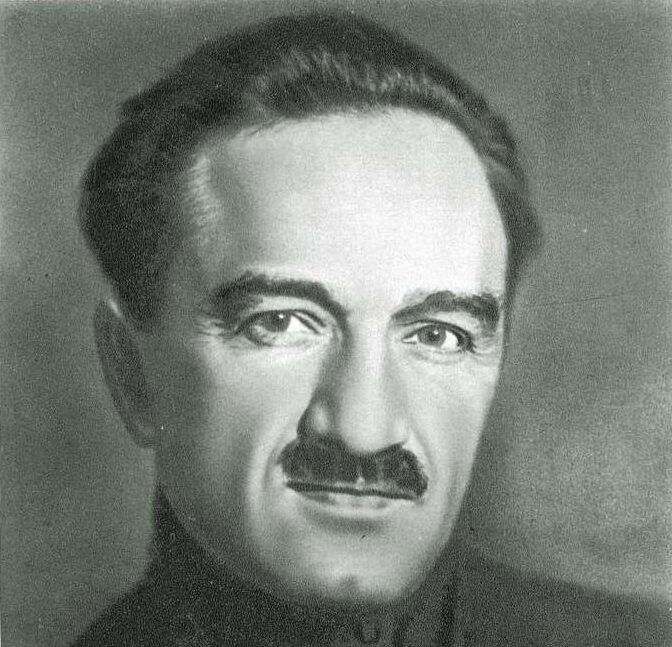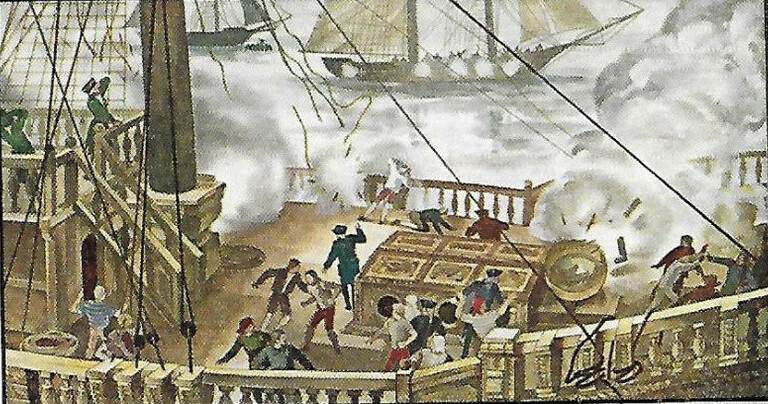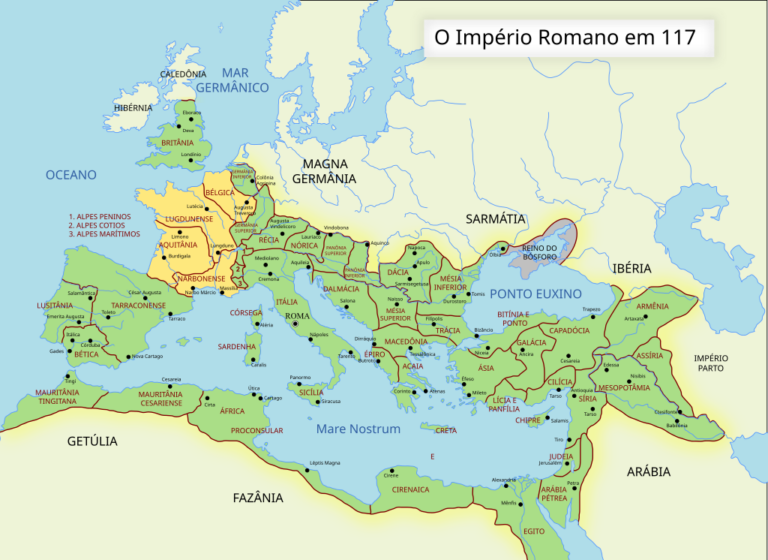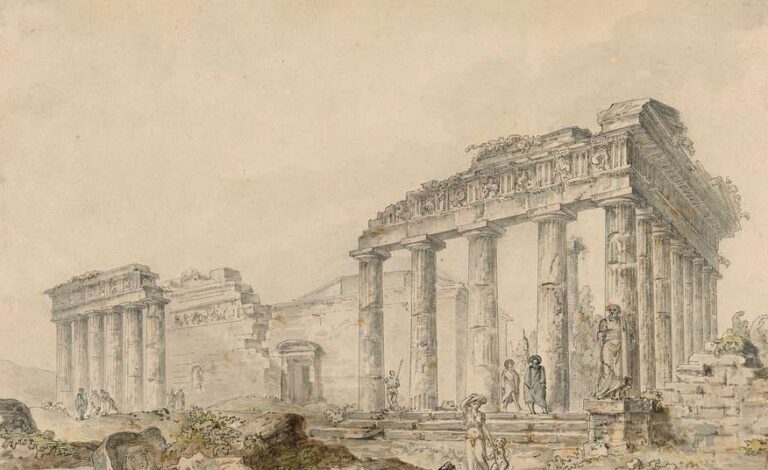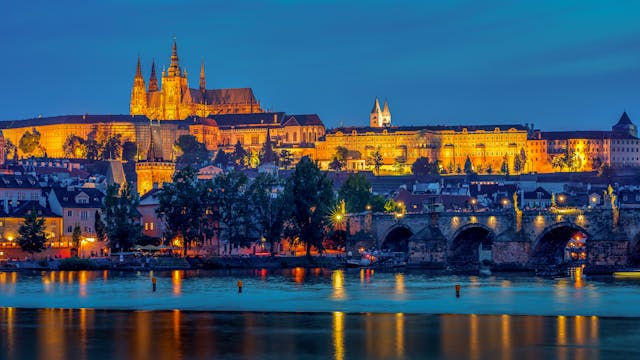
This article introduces a brief history of the Czech lands, tracing their journey from ancient times to the present day. From the early Celtic and Slavic settlers to the rise of Great Moravia and the Přemyslid dynasty, these lands have been a crossroads of civilizations. Over the centuries, Bohemia and Moravia flourished under the medieval Kingdom of Bohemia, endured Habsburg domination, and played a key role in European conflicts such as the Thirty Years’ War. The 20th century brought dramatic changes, including the formation of Czechoslovakia, Nazi occupation, and decades of communist rule before the Velvet Revolution restored democracy.
This article provides a brief history of the Czech lands, tracing their evolution from ancient times to the present, highlighting the most significant events and transformations that have shaped the country we know today.
Ancient and Early Medieval Periods (Prehistory–9th Century)
Prehistory and Early Inhabitants
The lands of present-day Czechia (Bohemia, Moravia, and Silesia) have been continuously inhabited since the Paleolithic era, with archaeological finds indicating human presence as early as 27,000 BCE (e.g., the Dolní Věstonice site, famous for its Venus figurine).
The region saw the Neolithic Revolution (~5000 BCE), when agriculture and permanent settlements emerged.
During the Bronze Age (~2000–800 BCE), cultures like the Únětice culture thrived, followed by the Lusatian culture, known for its fortified settlements and early metalwork.
The Iron Age (~800 BCE onwards) saw the rise of the Hallstatt culture, which had connections to Celtic and proto-Germanic groups.
Celtic and Germanic Tribes (4th Century BCE–4th Century CE)
By the 4th century BCE, the region became home to Celtic tribes, most notably the Boii, who gave Bohemia (“Boiohaemum”) its name. The Boii established oppida (large fortified settlements) and minted coins, showing a developed trade network. However, by the 1st century BCE, pressure from migrating Germanic tribes led to their decline.
By the 1st century CE, the Germanic Marcomanni and Quadi settled in Bohemia and Moravia. They frequently clashed with the Roman Empire, particularly during the Marcomannic Wars (166–180 CE) under Emperor Marcus Aurelius. Though Rome never conquered the region, its influence was evident through trade and cultural exchanges.
The Slavic Migration (5th–7th Century CE)
With the collapse of the Western Roman Empire and the Migration Period (4th–6th centuries), Germanic tribes moved westward, and Slavic tribes began settling in the Czech lands by the 6th century CE. These early Slavs established agrarian communities, using wooden houses and rudimentary fortifications.
One of the first recorded Slavic polities in the region was the Samo’s Empire (623–658 CE), a tribal confederation led by the Frankish merchant Samo. His kingdom, which included Bohemia and Moravia, successfully resisted the Avars and Frankish expansion. However, after Samo’s death, the confederation dissolved, and smaller tribal groups re-emerged.
Early Medieval Settlements (7th–9th Century CE)
By the 8th century, Slavic tribes in Bohemia and Moravia began forming early proto-states. Archaeological evidence suggests the construction of hillforts (hradisko), which later became administrative centers. Moravia, in particular, saw increased contact with the Avars, Byzantines, and Carolingians.
The Christianization of the region began in the 8th and 9th centuries, primarily through Frankish missionaries, though it was not yet dominant.
Great Moravia (9th–10th Century)
By the early 9th century, Slavic tribes in Moravia and western Slovakia consolidated into a powerful state known as Great Moravia under the rule of Mojmír I (r. 820s–846). He successfully united various Slavic groups and expanded his realm by conquering the Principality of Nitra, creating a centralized Slavic kingdom.
Under Rastislav (r. 846–870), Great Moravia resisted Frankish influence and sought independence from the East Frankish Empire. Rastislav invited Byzantine missionaries Cyril and Methodius in 863, who introduced Old Church Slavonic as a liturgical language and developed the Glagolitic script, laying the foundation for Slavic literacy and Christianity in the region.
Svatopluk I (r. 870–894) expanded Great Moravia to its greatest territorial extent, incorporating Bohemia, parts of Poland, Hungary, and Austria. He skillfully played the Franks and Byzantines against each other, maintaining Moravian independence. However, after his death, internal struggles weakened the state.
Under Mojmír II (r. 894–906), Great Moravia faced Frankish attacks and increasing pressure from Magyar (Hungarian) invasions. By the early 10th century, Magyar raids devastated Moravian territory, leading to the state’s collapse around 906. The Magyars established control over the Carpathian Basin, paving the way for the rise of Hungary, while Bohemia came under the rule of the Přemyslid dynasty.
The Přemyslid Dynasty (10th–14th Century)
Early Rule and the Formation of the Duchy of Bohemia
The Přemyslid dynasty established control over Bohemia in the 9th and 10th centuries, with Duke Bořivoj I (r. c. 870–889) as the first historically documented ruler. His conversion to Christianity, influenced by Great Moravia, helped integrate Bohemia into the broader European Christian world.
His successors, particularly Duke Wenceslas I (r. 921–935)—later known as Good King Wenceslas—fostered Christianization and diplomacy with the Holy Roman Empire. However, internal conflicts plagued the dynasty, and Wenceslas was murdered by his brother Boleslav I (r. 935–972).
Rise to a Kingdom (11th–13th Century)
Throughout the 11th and 12th centuries, the Přemyslids maintained a ducal status under the Holy Roman Empire but often struggled with internal rivalries and external conflicts. A major turning point came in 1212, when Ottokar I (r. 1198–1230) received the Golden Bull of Sicily from Emperor Frederick II, officially granting Bohemia the status of a kingdom and ensuring hereditary rule for the Přemyslid dynasty.
His grandson, Ottokar II (r. 1253–1278), expanded the kingdom into Austria, Styria, and Carinthia, challenging the Habsburgs and briefly making Bohemia a dominant regional power. However, his ambitions led to conflict with Rudolf of Habsburg, resulting in his defeat and death in 1278, paving the way for Habsburg influence in Central Europe.
The Luxembourg Dynasty (1310–1437)
After the fall of the Přemyslid dynasty in 1306, the Czech lands entered a period of political uncertainty. Several rulers briefly held power, but stability returned in 1310 when John of Luxembourg married Elisabeth of Bohemia, the last Přemyslid princess. This marriage brought the House of Luxembourg to the Bohemian throne, ushering in an era of expansion, cultural growth, and religious turmoil.
John of Luxembourg (1310–1346) – The Chivalrous King
John, known as the “King of Bohemia who never lived there,” focused more on European politics than governing Bohemia. He gained lands and influence across the Holy Roman Empire but spent little time in Prague. He died heroically at the Battle of Crécy (1346) during the Hundred Years’ War, fighting for the French despite being blind.
Charles IV (1346–1378) – The Golden Age of Bohemia
John’s son, Charles IV, became King of Bohemia in 1346 and was crowned Holy Roman Emperor in 1355. His reign is considered the peak of medieval Bohemian power and culture. Under his reign:
- Prague became the imperial capital of the Holy Roman Empire.
- Charles University (1348), the first university in Central Europe, was founded.
- St. Vitus Cathedral, Charles Bridge, and the New Town of Prague were built.
- The Golden Bull of 1356 established Bohemia as one of the key electors of the Holy Roman Emperor.
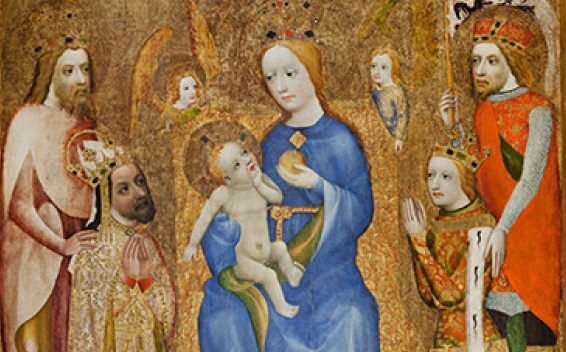
Wenceslas IV (1378–1419) – The Weak King and Religious Unrest
After Charles IV’s death, his son Wenceslas IV struggled to maintain the empire’s stability. His rule saw growing tensions between the nobility and the crown, along with increasing dissatisfaction with the Catholic Church. The teachings of Jan Hus, who criticized Church corruption, gained popularity, leading to religious conflicts. Wenceslas was deposed as Holy Roman Emperor but remained King of Bohemia until his death in 1419.
Sigismund (1419–1437) – The Hussite Wars and the Fall of the Luxembourgs
Following Wenceslas IV’s death, his brother Sigismund inherited the throne, but his reign was marked by chaos. His role in the execution of Jan Hus (1415) sparked the Hussite Wars (1419–1434)—a series of religious conflicts between Catholic forces and Hussite rebels in Bohemia. Sigismund only secured control over Bohemia after years of brutal warfare, but by the time he died in 1437, the House of Luxembourg was extinct in the male line, leading to a new period of political transition.
The Jagiellonian Dynasty (1471–1526)
After the extinction of the House of Luxembourg in 1437, Bohemia went through a turbulent period marked by the Hussite Wars (1419–1434) and the rule of George of Poděbrady (1458–1471), the only Hussite king of Bohemia. However, his rule was opposed by Catholic nobles and the Pope, leading to a new power struggle.
In 1471, the Bohemian nobility elected Vladislaus II Jagiellon, a member of the powerful Jagiellonian dynasty that ruled Poland and Lithuania. Vladislaus II’s rule was marked by a power shift towards the Bohemian nobility, who gained control over land, administration, and royal decisions. Known for his indecisiveness, he often avoided conflicts, earning him the nickname “Vladislaus the Well-Beloved” or “King Bene” (from his habit of saying “Bene” (Latin for “good”) to every request).
Vladislaus’s son, Louis II, inherited both the Bohemian and Hungarian thrones at just 10 years old. His reign was short and marked by external threats, particularly from the expanding Ottoman Empire. The defining moment of his rule came in 1526, at the Battle of Mohács, where Suleiman the Magnificent’s Ottoman army crushed the Hungarian forces. Louis II died in the battle, drowning in a river while retreating, ending Jagiellonian rule in Bohemia and Hungary.
Habsburg Rule and the Thirty Years’ War (16th–17th Century)
The rise of the Habsburg dynasty in the Czech lands began in 1526, when Ferdinand I of Habsburg was elected King of Bohemia following the death of Louis II Jagiellon at the Battle of Mohács. This marked the beginning of nearly four centuries of Habsburg rule, during which Bohemia was integrated into the Austrian Empire and underwent profound religious, political, and cultural changes.
At the time of the Habsburg takeover, Bohemia was a religiously diverse kingdom, with a significant portion of the population adhering to Hussite, Lutheran, and other Protestant beliefs. The Protestant Reformation gained strong support, and in 1609, Emperor Rudolf II issued the Letter of Majesty, granting religious freedoms to Protestants in Bohemia.
However, tensions grew between Protestant nobles and the Catholic Habsburg rulers, who sought to centralize power and enforce Catholicism. These conflicts would soon erupt into one of Europe’s most devastating wars.
The Defenestration of Prague (1618) – The Spark of the Thirty Years’ War
The breaking point came in 1618, when Protestant nobles, angered by the revocation of their religious freedoms, stormed Prague Castle and threw two Catholic officials out of a window—a famous act known as the Second Defenestration of Prague. This event ignited the Thirty Years’ War (1618–1648), a brutal conflict that engulfed not only Bohemia but much of Europe.
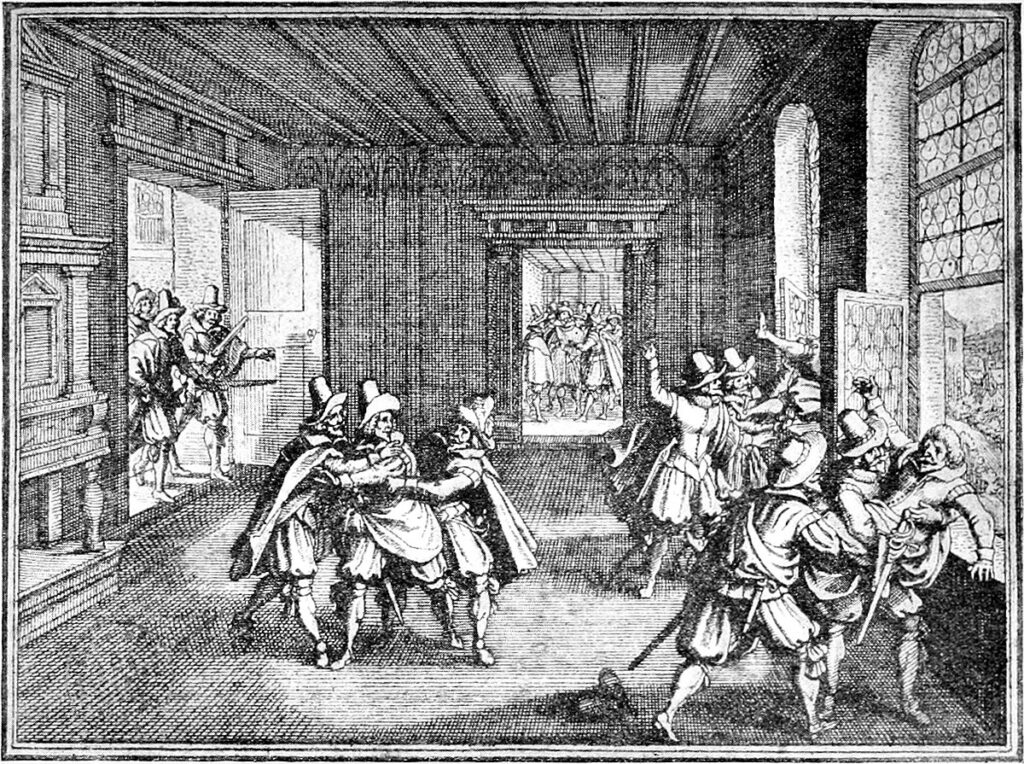
Bohemia in the Thirty Years’ War (1618–1648)
The war began with the Bohemian Revolt (1618–1620), in which Protestant rebels deposed the Catholic Emperor Ferdinand II and elected the Calvinist Frederick V of the Palatinate as their king. However, the rebellion was crushed at the Battle of White Mountain (1620), where Catholic forces decisively defeated the Protestant army. This marked the beginning of severe repression in Bohemia:
- Mass Executions and Exile – In 1621, 27 leading Protestant nobles were publicly executed in Prague’s Old Town Square, and many others fled into exile.
- Forced Catholicization – Protestantism was banned, and the Catholic Church, supported by the Habsburgs, aggressively reasserted its dominance.
- Germanization – The Czech language and culture were increasingly suppressed, with German becoming the dominant administrative language.
By the end of the Thirty Years’ War in 1648, Bohemia was left in ruins. The prolonged conflict, combined with outbreaks of disease and famine, had decimated the population, reducing it by nearly one-third. Once a powerful and semi-independent kingdom, Bohemia was now fully absorbed into the Habsburg Monarchy, losing much of its political autonomy as the Austrian rulers tightened their control. The economy suffered immensely, as farms lay abandoned, cities were devastated, and trade stagnated. With widespread poverty and cultural suppression, this period came to be known as the “Dark Age” of Czech history
National Revival and Modernization (18th–19th Century)
The 18th and 19th centuries marked a period of profound transformation in the Czech lands, driven by the forces of Enlightenment, industrialization, and nationalism. After the devastation of the Thirty Years’ War, Bohemia remained under Habsburg rule, but new ideas and economic changes gradually reshaped society.
Under the influence of the Enlightenment, the Habsburg rulers, particularly Maria Theresa (1740–1780) and Joseph II (1780–1790), implemented a series of reforms aimed at modernizing the state. These included improvements in education, administration, and industry, as well as the abolition of serfdom in 1781. Industrialization brought economic growth, particularly in cities such as Prague, Brno, and Plzeň, where factories and modern infrastructure emerged.
Despite these developments, the Germanization policies of the Habsburgs continued to suppress the Czech language and culture. This led to the Czech National Revival, a 19th-century movement dedicated to restoring Czech identity, language, and heritage. Scholars, writers, and activists such as Josef Dobrovský, Josef Jungmann, and František Palacký worked to standardize and promote the Czech language, publish historical works, and revive national pride. Czech literature, music, and theater flourished, with figures like Božena Němcová, Karel Hynek Mácha, and Bedřich Smetana playing key roles in shaping Czech cultural identity.
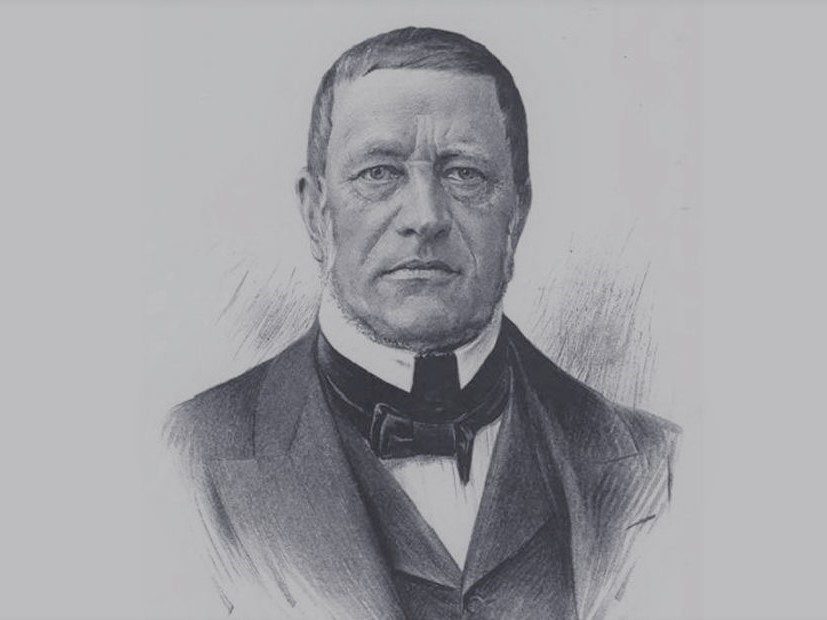
As nationalism grew, so did political aspirations. By the mid-19th century, Czechs increasingly demanded greater autonomy within the Austro-Hungarian Empire. The revolutionary Spring of Nations in 1848 saw widespread demonstrations in Prague, but the Habsburgs crushed these uprisings. However, nationalist sentiment continued to rise, setting the stage for the eventual struggle for Czech independence in the early 20th century.
Czechoslovakia and World Wars (20th Century)
The Formation of Czechoslovakia (1918)
After the collapse of the Austro-Hungarian Empire at the end of World War I, Czechoslovakia was officially established on October 28, 1918. Led by Tomáš Garrigue Masaryk, the new republic united Czechs and Slovaks into a single state, based on the principles of democracy and national self-determination. The new country boasted a strong industrial economy, inherited from the Austro-Hungarian era, and became one of the most advanced nations in Central Europe. However, tensions arose due to the diverse ethnic composition of the state, which included Germans, Hungarians, Ruthenians, and Poles, many of whom felt marginalized under Czech-dominated governance.
The Munich Agreement and Nazi Occupation (1938–1945)
Czechoslovakia’s independence was severely threatened in the late 1930s as Nazi Germany sought to expand its influence. In 1938, British and French leaders signed the Munich Agreement, allowing Hitler to annex the Sudetenland, a border region with a large ethnic German population. Czechoslovakia was not invited to the negotiations, and the loss of Sudetenland crippled its defenses.
In March 1939, Hitler ordered the full occupation of Bohemia and Moravia, turning it into a German protectorate, while Slovakia became a Nazi puppet state. The occupation led to brutal repression, the execution and deportation of Czech resistance fighters, and the near-complete annihilation of Czechoslovakia’s Jewish population during the Holocaust. The assassination of Reinhard Heydrich, a high-ranking Nazi official in Prague, in 1942 led to harsh reprisals, including the destruction of Lidice and Ležáky, villages whose inhabitants were executed or sent to concentration camps.
Post-War Communist Takeover (1945–1948)
After World War II, Czechoslovakia was restored, but its political landscape had drastically changed. The Beneš Decrees led to the expulsion of over 2.5 million ethnic Germans, reshaping the country’s demographics. Though initially a democracy, Czechoslovakia fell under Soviet influence, as the Communist Party of Czechoslovakia (KSČ), backed by the USSR, seized power in 1948. This marked the beginning of over four decades of communist rule, transforming the country into a satellite state of the Soviet Union.
Stalinist Era
The early years of communist rule were marked by Stalinist policies, including nationalization of industry, collectivization of agriculture, and brutal political purges. Thousands of intellectuals, politicians, and suspected enemies of the state were imprisoned, executed, or sent to labor camps. One of the most infamous show trials was that of Rudolf Slánský, the General Secretary of the KSČ, who was executed in 1952 during Stalin’s anti-Semitic purges.
De-Stalinization and Political Repression (1953–1968)
Following Stalin’s death in 1953, Czechoslovakia saw mild reforms under Antonín Novotný, but political oppression and strict censorship continued. The economy stagnated due to inefficient central planning, and dissatisfaction grew among workers and intellectuals. Despite this, Czechoslovakia remained one of the more industrialized Soviet bloc countries, with a strong arms and manufacturing industry.
The Prague Spring and Soviet Invasion (1968)
Hopes for change emerged in 1968 when Alexander Dubček became First Secretary of the KSČ and launched the Prague Spring, a period of liberalization and political reform. Dubček promoted “Socialism with a Human Face,” which aimed to introduce political freedoms, decentralize the economy, and reduce censorship. For the first time in decades, Czechs and Slovaks could openly discuss politics, publish uncensored works, and push for democratic reforms.
However, the Soviet Union, fearing a weakening of its control over the Eastern Bloc, invaded Czechoslovakia on August 21, 1968, alongside other Warsaw Pact nations. Over 500,000 troops occupied the country, suppressing the reforms and arresting Dubček. The invasion led to worldwide condemnation, but no Western intervention. Dubček was forced to resign in 1969, replaced by Gustáv Husák, who initiated a period of “Normalization”, rolling back reforms and restoring strict communist rule.
Normalization and Growing Dissent (1969–1989)
Under Husák’s rule, Czechoslovakia became one of the most repressive Soviet-controlled states. Censorship was reinstated, secret police cracked down on dissidents, and political opposition was silenced. However, underground resistance persisted. In 1977, a group of intellectuals, including Václav Havel, published Charter 77, a manifesto demanding human rights and political freedoms. Though signatories were harassed and arrested, the movement laid the groundwork for future opposition.
Throughout the 1980s, economic decline and dissatisfaction with communist rule grew. Inspired by Mikhail Gorbachev’s reforms in the Soviet Union and democratic movements in Poland, Hungary, and East Germany, Czechs and Slovaks began demanding change.
Velvet Revolution and the Czech Republic (1989–Present)
On November 17, 1989, peaceful student protests in Prague were brutally suppressed by police, sparking nationwide demonstrations. Hundreds of thousands of people took to the streets, led by Václav Havel and opposition groups like Civic Forum. Within weeks, the communist government collapsed as mass protests and general strikes made its rule unsustainable.
On December 10, 1989, the communist leadership resigned, marking the peaceful Velvet Revolution. Shortly after, Václav Havel was elected President of Czechoslovakia, restoring democracy after 41 years of communist rule.
The Peaceful Dissolution of Czechoslovakia (1993)
As democracy took hold, long-standing tensions between Czechs and Slovaks resurfaced. Disagreements over governance and national identity led to negotiations for a peaceful split. On January 1, 1993, Czechoslovakia officially dissolved, giving birth to two independent nations: the Czech Republic and Slovakia. This peaceful separation, known as the Velvet Divorce, was one of the most amicable dissolutions of a state in modern history.
Integration into Europe: NATO and EU Membership
The Czech Republic pursued a pro-Western foreign policy, seeking integration with European and transatlantic institutions.
- In 1999, the country joined NATO, strengthening its security ties with Western allies.
- In 2004, the Czech Republic became a full member of the European Union (EU), integrating into the European economy and benefiting from trade, investment, and free movement across the continent.
…
Related articles:
Inter-Bloc Organizations in the Late Stalin Era: More Than Platforms for East-West Feuds
Brief History of the Czech Republic | Embassy of the Czech Republic in Riyadh

